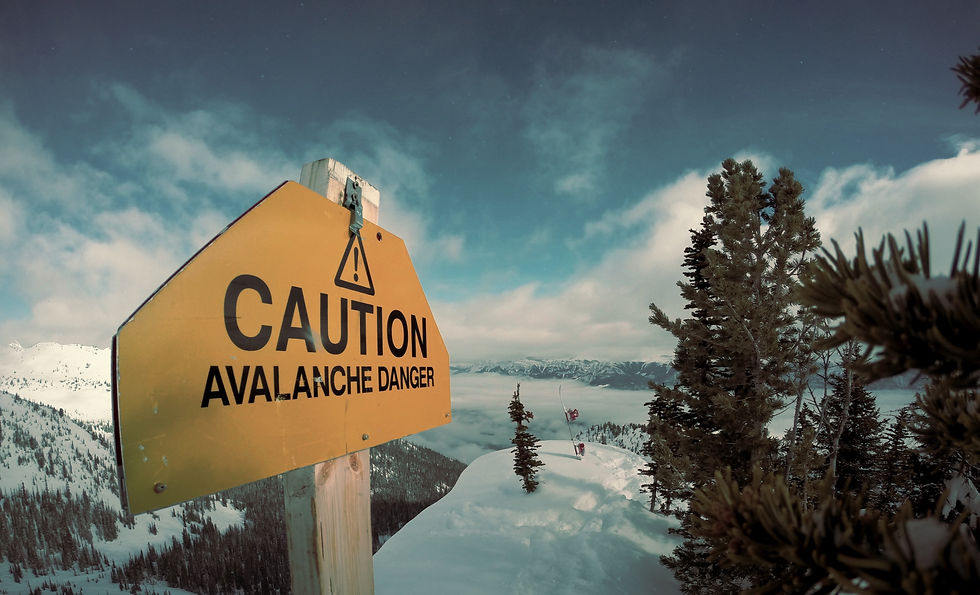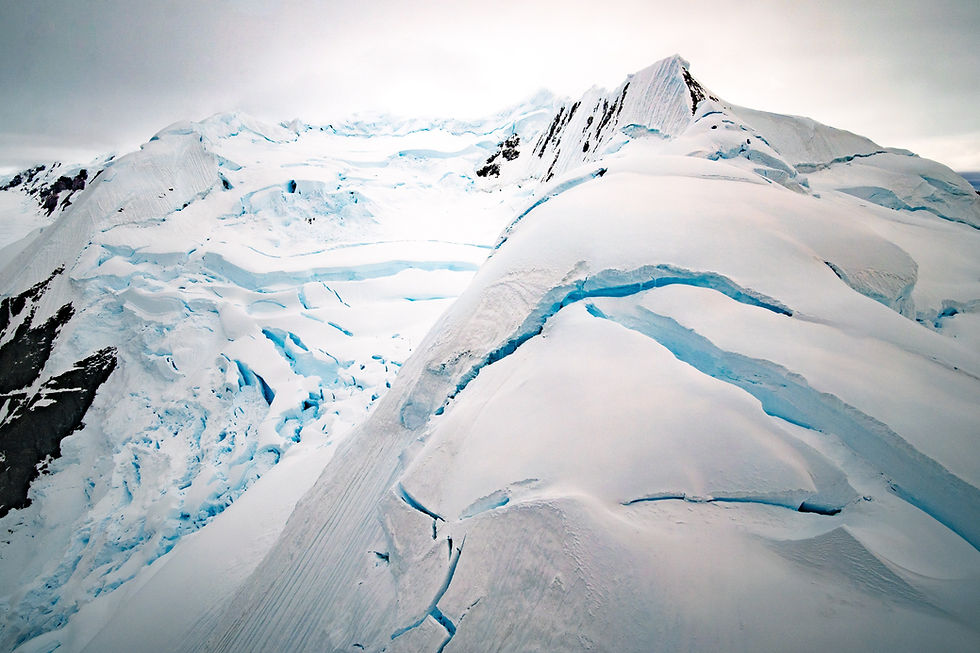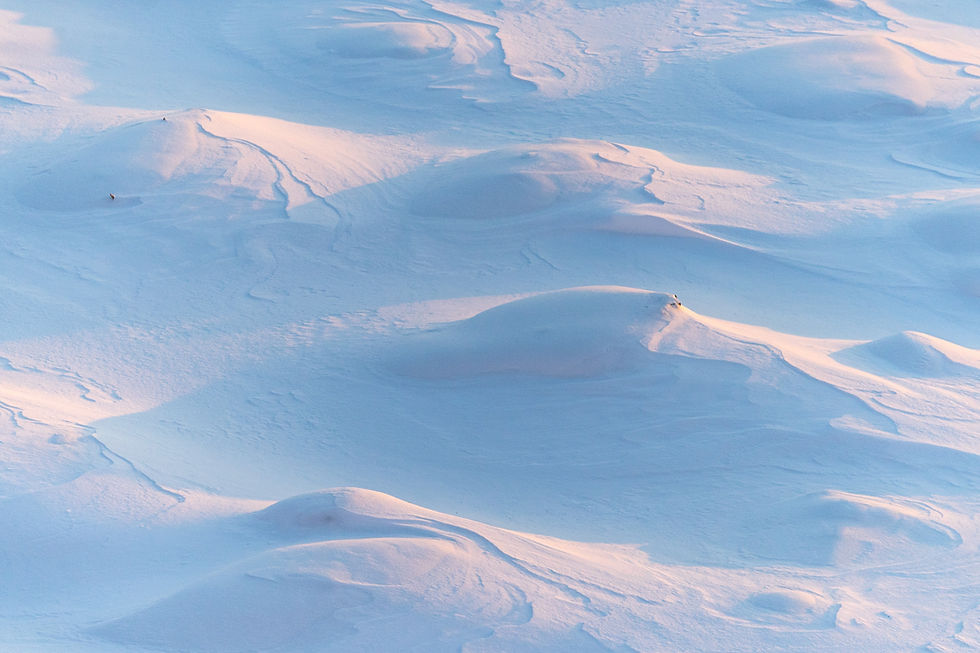I've never worried about avalanches while snowboarding, thinking that was only something to worry about if I was taking a helicopter to mountain peaks far beyond the resort ski boundaries. Until recently, I had never considered that I might be in danger of getting buried by an avalanche while snowboarding within the boundaries of a ski resort. We're hearing more about avalanches as recent winter seasons have broken records with major snowfall and heavy snowpack. I decided to learn how to identify avalanche risks and find out just how concerned I should be about them happening at the ski resorts I visit.
I grew up snowboarding Lake Tahoe but never heard about the Alpine Meadows avalanche of 1982 until I watched the documentary on Netflix: Buried: The 1982 Alpine Meadows Avalanche. Am I in danger of being in the way of an avalanche while snowboarding? I wondered. While taking the chairlift at Heavenly Resort in Lake Tahoe, my boyfriend and I chatted with a snowboarder from Sydney, Australia. He showed us his avalanche transceiver fixed to his CamelBak, and told us he had purchased it when he arrived in Lake Tahoe after hearing that there was an avalanche at a ski resort in the area.
He explained that the device was designed to reflect back frequencies set off by rescue teams during avalanche search operations. The avalanche transceiver is designed to help rescue workers locate you more quickly, giving you a better chance of surviving the avalanche.

My boyfriend ordered each of us an avalanche transceiver, which I thought might be silly, considering our local mountain has mostly groomed runs with less than stellar snowpack. But leading up to our trip to snowboard Utah, my mind began to change on the matter. I clicked into the weather app on my phone to see that there was an avalanche warning in the area of the ski resort we were headed to. The report stated that some avalanches had already taken place, with more highly likely to occur in the upcoming days as a major snow storm continued.
I began to question my ability to identify avalanche danger or survive an avalanche, I don't know what to do! I've never had any avalanche training. How did I not know this was a thing? I decided that I need to be better prepared. It was time to do some research.
According to the National Avalanche Center, avalanches can reach speeds of up to 100 mph and take 25-30 lives each year on average in North America. Avalanches can be triggered when the amount of pressure and stress placed upon snowpack changes.
Added weight like a skier or snowboarder can trigger the snowpack to create an avalanche, but sometimes even just a light dusting of new snow can be enough to send a large section of snow speeding down the mountain face. An avalanche on one side of a mountain can trigger one on the other side, too.

The National Avalanche Center also notes that precipitation and weather changes can be causes of avalanches, as the layers within the snowpack weaken. The research and list of avalanche types is extensive. It's clear that many people and associations dedicate their lives to understanding more about avalanches and how to manage them, protecting the safety of skiers, snowboarders, and people hiking, snowshoeing, climbing, and snowmobiling in the backcountry.
Looking up the fatalities in North America due to avalanches, there have been five people killed in the first 33 days of 2024. Each of them were in a different state: Alaska, Idaho, Wyoming, Colorado, and California. In the 2022-2023 winter season there were 30 fatalities due to avalanches, with a third of them being skiers, according to the Colorado Avalanche Information Center.

One semi-comforting statistic from the 2022-2023 winter season is that none of the fatalities were from skiers or snowboarders who were within the bounds of a ski resort. In 2022-2021 there weren't any in-bound riders killed either. But in 2024, there has been one, at Palisades Tahoe, KT-22 in Sierra Nevada.
Signs of avalanche risk include recent avalanches in the area, or visible cracks in a layer of snow, which signals that the snowpack on the mountain is unstable. If you listen closely, when the snow falls on unstable snowpack it resembles the sound of a drum, according to the National Avalanche Center.

There is an increase in the risk of avalanches in the days following heavy snowfall or rain, which adds more stress to the snowpack, causing it to be unstable for several days. Stay away from snow drifts, where the wind has pushed a large pack of snow together. You might see this near the peak of the mountain.

Check the avalanche forecast in the days after a storm to assess the risk in the area that you'll be exploring. The forecast will provide the level of avalanche risk on 1-5 scale in highlighted areas across the United States. Clicking on the area will provide a detailed avalanche report.
Getting more information on avalanches feels like a good place to start, as well as regularly checking the avalanche forecast. The National Avalanche Center offers online avalanche forecasts, gear, and training to protect yourself. See their website to equip yourself with the knowledge and gear to prepare for days of heavy snowfall. Be safe, have fun, and let it snow!


Comments